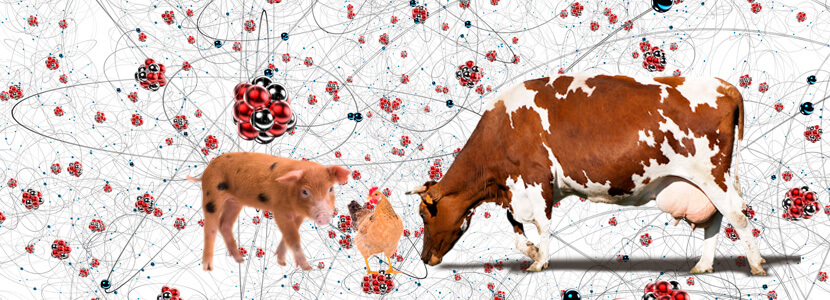 03 Nov 2022
03 Nov 2022
The top animal feed trends will be presented at EuroTier 2022. The world’s leading trade fair for animal husbandry and livestock management is back with an international platform, offering innovative approaches that contribute to enhance adaptations in a world under constant change.

The biggest European and International Livestock farming event, will serve as the perfect platform to showcase all the new trends and innovations in agriculture. It will take place at the Hannover Exhibition Grounds, from the 15th to the 18th of November 2022 where approximately 1,700 companies from 55 countries will be exhibiting their full range of products and services destined for modern animal husbandry. The event’s theme “Transforming Animal Farming”, is never more relevant than now, in a highly convoluted world demanding solutions for the challenges of the present and the future. The organizer of this great trade fair as well as its technical program are DLG (German Agricultural Society).
Amongst the many products and topics to be covered, animal feed trends will have a predominant role within the event. Detlef Kampf, Head of Animal Nutrition, DLG Competence Center Agriculture, has provided an overview of such trends which will be presented by multiple exhibitors. The following are some of the categories worth mentioning:
Supplementary feeds or pre-mixes do not focus primarily on supplying energy and major nutrients to the animal, but are intended to support them through the inclusion of special ingredients. These could include amino acids and enzymes, medium chain fatty acids, oligo- or polysaccharides or polyphenolic acids that promote intestinal function, metabolism and the immune system, and thus animal health. Complementary feeds are of particular interest currently as they can assist in reducing the amount of antibiotics used on livestock farms.
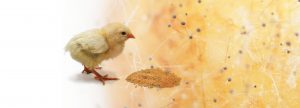
Our understanding has grown into how excess nitrogen and phosphorous in livestock rations passes through the animals and are excreted in manure, where it can pollute the environment. Nutritionists continue to look at how they can reduce the damaging effects that may result. The aim of nutrition is to match rations to the animal’s actual requirements to maintain body functions as well as for meat, milk or egg production.
Due to the high protein requirements of animals, protein supplementation often exceed nutritional-necessary levels. This is also the case with phosphorous, where the available quantity in the diet from a particular source can vary so there could be more than expected, or it may be in a form that’s poorly utilizable by the animal and immediately excreted. Protein requirements can be better balanced by optimizing the feed protein quality through targeted feed processing, supplementation of free amino acids, as well as through the use of specific enzymes. Most important is meeting the precise nutritional requirements for an animal’s particular performance level and or growth phase. Issues with phosphorus can be addressed by reducing the phosphorous content of the animals’ diet to manageable levels that will not result in a deficiency.
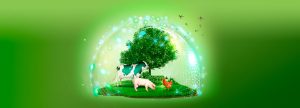
As it becomes increasingly difficult to source soybean meal from suppliers that can guarantee that the product does not include material from genetically modified (GMO) plants, more and more farmers in Germany and some other European countries have stopped using of imported soybean meal or feed that may include this material. Therefore, there is a growing requirement for alternative protein feedstuffs that can be used instead, such as rapeseed meal (non-GMO!), field beans, peas, lupins or sunflower meal. All of these are now in demand, and research continues into the extent to which each of these feeds can be used in animal diets without affecting animal health, feed intake and efficiency, as well as the desired texture and taste characteristics of the animal products being produced.
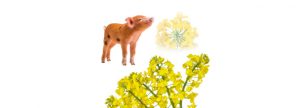
As the growing world population continues to put a focus on the ethics of feeding livestock with ingredients that could be used for human nutrition, the search continues for new protein sources to meet livestock’s needs. One promising route of current research is insect protein, which has also been approved in the European Union for some time. The feasibility of using this novel food source is not in doubt, initial results from feeding trials with monogastric animals are already available. Food safety issues still need to be clarified, especially with regard to possible hygiene risks..
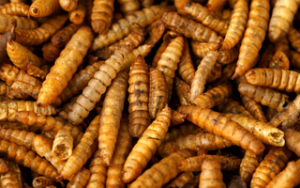
In addition to the supply of energy and essential nutrients, providing adequate amounts of water (two to five liters per kilogram of dry matter intake depending on the species, direction of use, level of performance, feeding, weather and other factors) in appropriate quality is a crucial prerequisite for health and performance of farm animals. Water can, therefore, be regarded as the most important nutrient or feed, and the farmer is solely responsible for ensuring it does not become a limiting factor in animal performance.
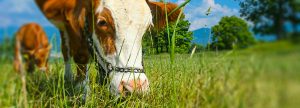
Coarse feeds, such as grass or corn silage, account as the major part of ruminant feed, but their quality and feed value can vary considerably. Maximizing feed quality increasingly begins with focusing on technically well-founded cultivation planning, as well as on achieving optimal harvesting characteristics, by cutting and gathering the crop at its most nutritious stage. In order to safeguard the quality of forage, additional silage additives can be used that make a significant contribution to improving the fermentation process; but these also stabilize the fermented forage during storage to help maintain its quality when the silo is opened and the crop is exposed to the atmosphere.
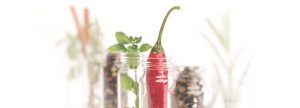
Feed additives are widely used in livestock diets in the European Union, but only after they have been through a comprehensive and complex approval process to show they are safe for farmers and animals, as well as effective. The use of enzymes to improve the digestibility of certain ingredients such as protein, phosphorus or carbohydrates are widely used. Likewise, numerous probiotics and other products are used to stabilize gut flora and health.
EuroTier 2022 represents a suitable platform to allow a comprehensive overview of these new feed trends. Providing a space for discussion and information exchange regarding the future of animal feed. Where efficiency, animal health and welfare and sustainability represent non negotiable premises.

The nutriNews International team is looking forward to taking part in EuroTier 2022. Where we will be live at the Hannover exhibition grounds, covering all these trend-setting developments within the agricultural sector, and sharing with all of those who wish to come visit us at our stand. Where we hope you get to enjoy our media offer and our international launch!
Source: Excerpt taken and modified from DLG Media Service September 20, 2022

Subscribe now to the technical magazine of animal nutrition
AUTHORS

Nutritional Interventions to Improve Fertility in Male Broiler Breeders
Edgar Oviedo
The Use of Organic Acids in Poultry: A Natural Path to Health and Productivity
M. Naeem
Synergistic Benefits of Prebiotics and Probiotics in Poultry, Swine, and Cattle
Gustavo Adolfo Quintana-Ospina
Hybrid Rye Potential in Laying Hen Feed Rations
Gwendolyn Jones
A day in the life of phosphorus in pigs: Part I
Rafael Duran Giménez-Rico
Use of enzymes in diets for ruminants
Braulio de la Calle Campos
Minerals and Hoof Health in the Pregnant Sow
Juan Gabriel Espino
Impact of Oxidized Fats on Swine Reproduction and Offspring
Maria Alejandra Perez Alvarado